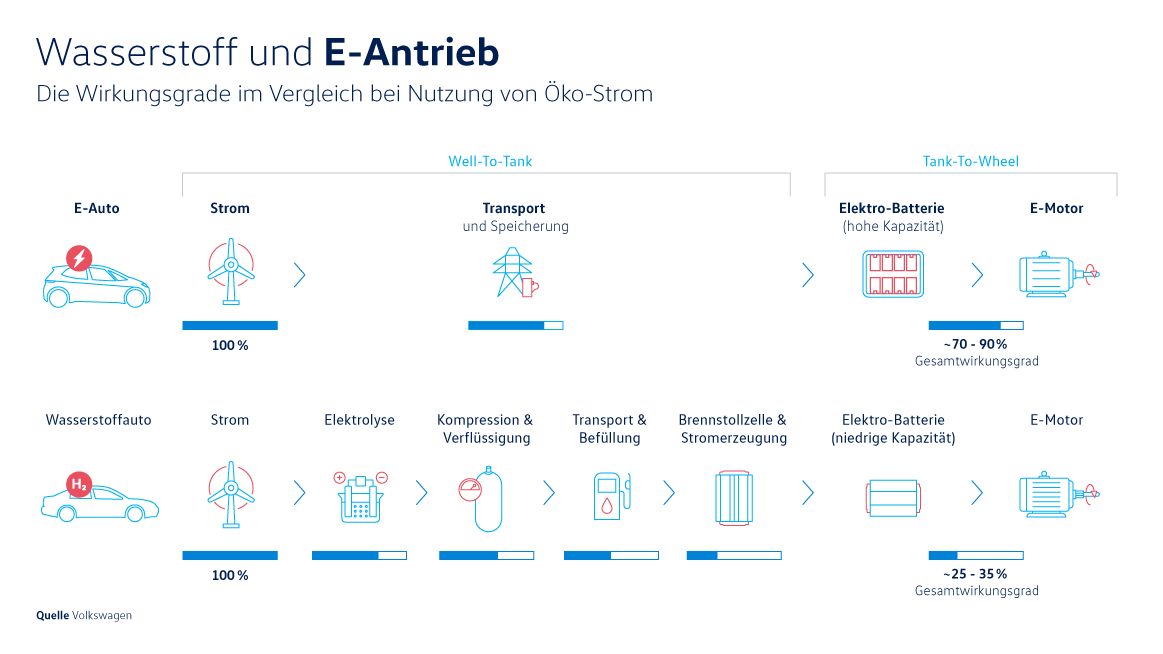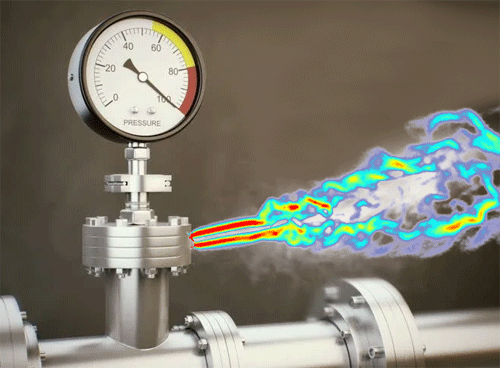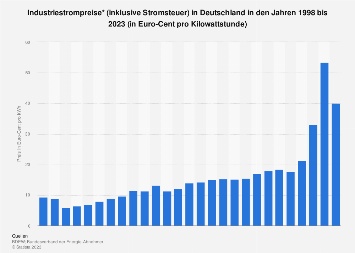How penguins revolutionized our modern agriculture.
Hello dear community,
Thank you for the great feedback on my last post. I hope your oven survived the practical tests well.
For those who want to show their oven new horizons, go here to the mentioned post:
https://getqu.in/2A360BDV8GYN/n12zGfGeeF/
Once again as food for thought, as I myself will run out of topics in a few weeks.
What topics from the industrial, energy or chemical sectors do you perhaps scrutinize more often than investors?
Enclosed is my heartfelt comment on the topic of "ammonia". I hope you like it.
Why ammonia is the better alternative to "green" hydrogen.
1. meaning and history:
Ammonia is one of the most widely produced chemicals in the world. "Bread from air" was the name researchers Fritz Haber and Carl Bosch gave to their process, which still moves the world today - ammonia synthesis.
During the competition for fertilizers in the Industrial Revolution, it was ultimately again the competition between the major European powers where the land of the "poets and thinkers" opened up a revolution.
Based on research by the biologist Justus von Liebig, nitrogenous fertilizers experienced an incredible boom in demand. Today, this can be compared more with the semiconductor industry.
Natural deposits of such fertilizers were limited. The potential here lay in Chile saltpetre and guano (a mixture of excrement from sea birds, such as penguins on limestone).
So while nowadays people tend to look for dependencies, almost 100 years ago they wanted to limit dependencies.
Ostwald took the first steps and achieved success with synthetic fertilizers with his Ostwald process. Today, however, this process is used more for the production of nitric acid.
Birkeland, a Norwegian, with the support of industrialist Sam Eyde, developed a process for producing nitric acid using an electric arc. However, this was drastically inefficient.
Now let's get to the real issue:
The Germans' drive for self-sufficiency was unbroken. The chemists Fritz Haber and Carl Bosch thus developed a large-scale synthesis based on nitrogen, which makes up almost 80% of the air, and hydrogen. BASF showed great economic interest in this $BAS (-0.64%) . This not only led to a cooperation. In 1913, the first industrial-scale plant for the production of ammonia was built in Ludwigshafen, with a capacity of 30 t/day, which was enormous at the time.
Due to the First World War and the resulting capacity for explosives, further plants were built in Bitterfeld and Leuna. Incidentally, this construction still represents the basis for the significant chemical industry in Saxony-Anhalt today.
2. "Bread from air" - the process in color.
Conventional production (gray):
To produce ammonia NH3 you need nitrogen N2 and hydrogen H2. Nitrogen can be easily obtained by air injection. Hydrogen was obtained by chlorine-alkali electrolysis. Nowadays, however, hydrogen is primarily produced from natural gas by steam reforming.
After a relatively simple process, you end up with a really nasty, pungent-smelling liquid.
"Green" production:
The "green" production of ammonia differs only slightly from the conventional process.
Since nitrogen is already taken from the air and therefore does not generate any greenhouse gases, CO2 savings are only possible in the production of hydrogen H2.
In this case, hydrogen must be fed directly from water by means of electrolysis. At least this would be the most efficient way, since no further change of state of hydrogen has to be taken into account.
Thus, the process only changes in the production of the raw material "hydrogen". The rest of the synthesis is also carried out here according to the Haber-Bosch process.
3. use - Why is ammonia actually so important for private use?
Ammonia is an important chemical raw material for just about all branches of industry. Already in private use we find it for example in:
- our refrigerator (refrigerant)
- our clothing (dye)
- diesel vehicles for exhaust gas treatment (Adblue as urea solution)
- proteins in the body and in the urea cycle as a degradation product of an endogenous "overdose
4. what does this mean in terms of possible profiteers with regard to an investment?
Of course, we have to ask ourselves the question behind the how, what and why. In general, ammonia can now be counted as part of the energy storage segment, but it receives much less attention in this regard than hydrogen.
The world's largest publicly traded manufacturers are Yara $YAR (+0.79%) and CF Industries $CF (+2.38%) Yara, which also produces ammonia itself, but belongs more to the chemicals trade, like Brenntag, as an industry. $BNR (-1.23%) as an industry. Therefore one is also more crisis-proof in recessionary times. Chemical distributors can issue containers of any size and purchase large batches, thus retaining the difference as a margin. This tends to make customers more willing to buy smaller containers in times of economic uncertainty, thus reducing inventories in the event of a production outage due to lack of demand.
CF Industries, on the other hand, is a "real" producer and has been aiming to produce "green" ammonia since this year.
The tendency now, in terms of advanced processes, is not to feed air because of the better efficiency, but pure nitrogen. In parallel, of course, hydrogen. The manufacturers can usually demonstrate the relevant process expertise themselves, so that dependence on hydrogen suppliers can actually be ruled out. One exception is Linde's engineering division. $LIN represents an exception. They have knowledge of entire hydrogen and ammonia plants. Incidentally, this would also be a further reason against the "small" hype stocks, such as Nel $NEL (-3.5%) or Plug $PLUG (+8.23%) from the hydrogen segment and why they are unlikely to catch on. After all, ammonia would be a gigantic consumer for this industry. Nevertheless, ammonia producers are funny low valued on the stock market. P/E ratios average 5. Whereas some shares of the largest hydrogen ETF are valued $HTWO (-1.42%) are valued at >20, if they can show any profits at all.
One example:
CF-Industries is valued at around €14 billion. Plug Power is still valued at just under €7 billion. That is half. While Plug has been burning money for years and is not even making billions in sales, CF is extremely profitable.
Both are superior in the "clean" energy segment. Yet CF is expected to see its business decline in the coming years. That is inexplicable and illogical, and it certainly won't happen that way.
But where are the growth potentials?
This is really extremely difficult to assess in this area, as the market is largely saturated and divided up.
In general, however, one should really emphasize BASF. Although the closure of ammonia production at the Ludwigshafen site is attributable to the high production costs in Europe, the entire value chain of products in the ammonia sector is largely retained.
In the following, I would now like to take a closer look at some products which, in my opinion, have a high growth potential and are based on ammonia. Due to the growth potential of the following, the ammonia production of the manufacturers should also be stable in the future and gain in importance naturally.
Urea:
Contrary to popular belief, urea is not merely ammonia or a solution of it. It is a chemical compound in its own right and a by-product of ammonia.
With a market share of 46%, urea is the nitrogenous fertilizer par excellence. The trend, of course, is for it to continue to grow as the global population continues to rise. Furthermore, many raw materials of the future will be plant-based. So of course there is considerable growth potential here, too, and a secure, crisis-proof market. People always eat!
3 exemplary representatives: Yara $YAR (+0.79%) , CF Industries $CF (+2.38%) , Finished Lobe $FERTIGLB
Nitric Acid:
Nitric acid is probably the best known nitrogenous acid. In high concentrations, however, it is extremely dangerous, since nitrous gases escape, which are toxic and corrosive. It is needed as a base material for explosives such as TNT or nitroglycerine and is therefore essential for the mining sector. Also here Yara can be found again. And no, this is not intended as an advertisement. But they have the majority of the ammoniacal and nitrous production in their own hands and appreciate lucrative business very much.
Off-market sizes in this context are, for example, still SKW Piesteritz GmbH or Staub & Co. and many other medium-sized companies.
Aniline:
Although aniline is only produced in the final stage with ammonia in modern processes, it is still a steady market with growth. Earlier processes involved a complete reaction chain with ammonia. Aniline is a basic material for the production of paints, medicines and artificial rubber, as well as fibers aka synthetic fibers. As a substance, aniline is also the eponym of the largest chemical company BASF $BAS (-0.64%) which is derived from the original name of the Badic Aniline- and Soda-Fabrik originates.
In addition, however, DuPont $DD (-1.3%) , Shin-Etsu $4063 (+0.75%) or Eastman $EMN (-0.39%) offer many aniline-based products.
6. ammonia as the fuel of the future?:
The purpose behind my contributions is, of course, to communicate energy sources of the future and to focus on diversification.
Solution as fuel alternative:
Since ammonia consists of 75% hydrogen and 25% nitrogen, it is easy to split again with the help of a so-called ammonia cracker. This means that hydrogen can be used to generate energy in a fuel cell, for example, and its efficiency is many times higher than that of hydrogen. Nevertheless, it lags far behind the battery vehicle.
Nevertheless, well-known companies, especially from the heavy-duty transport sector, have come forward to consider ammonia as a solution for the future.
The German Railways wants to convert some of its freight trains to ammonia in order to minimize its diesel fleet.
Also the VW subsidiary $VOW (+1.39%) , MAN, is working on ammonia-based marine engines.
John Deere $DE (+0.26%) is also working on such engines for medium-heavy tractors.
7. ammonia as energy storage and what advantages does it have now?
The main focus here is the fact that hydrogen is needed to produce ammonia, but would have to be liquefied in an energy-intensive way for transport.
A brief review: Hydrogen must be cooled to about -250 degrees Celsius for this and compressed to 700 bar.
Ammonia, on the other hand, can be liquefied at 20 degrees Celsius, i.e. room temperature, and at about 8 bar.
The energy input is therefore dramatically lower. In addition, the energy density of ammonia (~3.3 kWh/l) is higher, since hydrogen (~2.2 kWh/l liquid) is chemically bound as an energy carrier in this process, thereby reducing the volume of hydrogen.
Corresponding parameters are taken from the "Formelsammlung" of the Duden publishing house.
In addition to the advantage I described above, that the compression cost of ammonia is much lower than that of hydrogen, there is the fact that ammonia can also be easily stored chemically and stored much more advantageously. For example, ammonia can be converted into a salt, making it very easy to store and transport as a solid. At about 60 degrees Celsius, the given salts decompose and release ammonia.
But even without conversion, ammonia can already be used as a gas, since the infrastructure of the natural gas network would be designed for ammonia. It can be transported by ship, by pipeline, but also in ordinary gas cylinders or gas cartridges.
This is because the structure of ammonia is coarser and larger than that of hydrogen.
What is the general disadvantage of ammonia?
The main disadvantages are the acute health and environmental hazards posed by the substance. In the event of leakage, there would be lasting environmental damage to animals, nature and humans.
Ammonia has only a quarter of the energy of gasoline and only half of that of diesel. Accordingly, it would take twice as much as fossil fuels.
Incomplete combustion, which is also quite common in engines, produces the narcotic and extreme greenhouse gas "laughing gas". Engines must therefore burn extremely efficiently and carefully.
Postscript:
I hope you enjoyed this article.
The next article will look at the chemical processing of lithium. The CO2 balance is interesting, but the focus will be on the fact that the stock market completely misjudges the value chains and the valuations distort the real economic picture.

























